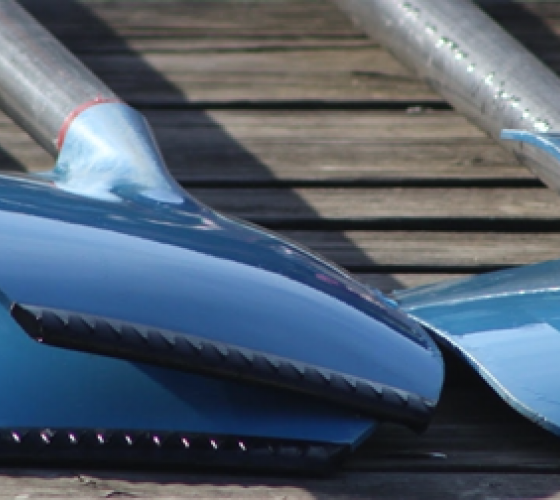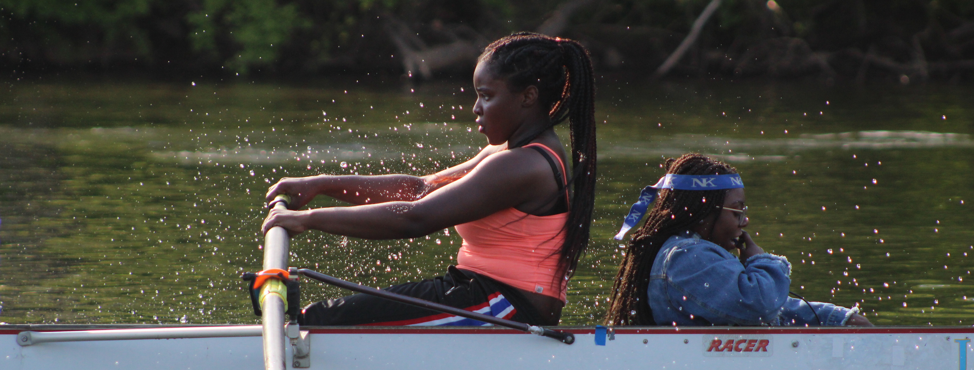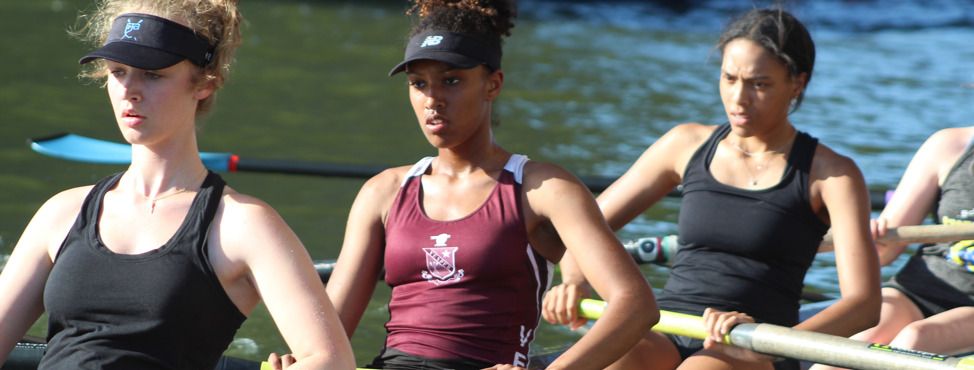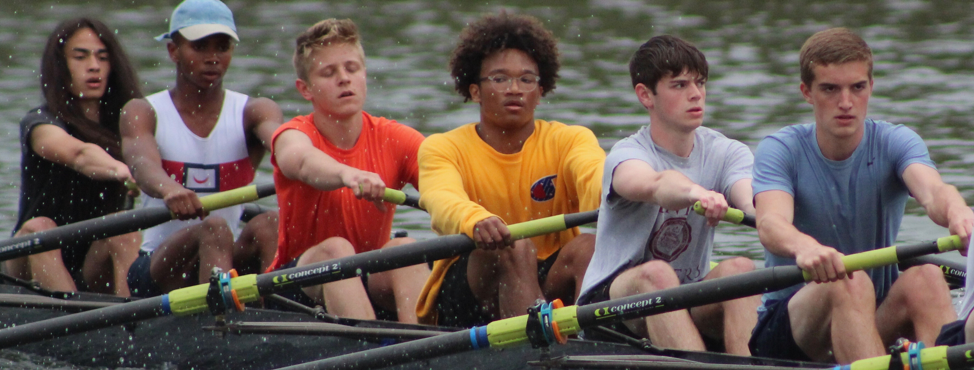
Recruiting season is well under way, and over the past several weeks we have received a number of requests from college coaches asking for advice on how to create more inclusive and diverse rowing programs. Inspired by these requests, this week PCR will be sharing our five-part information guide that includes advice and additional resources to help coaches and teams get started.
PCR’s Guide to Making College Rowing More Inclusive includes the following parts:
- Becoming an Anti-Racist Team Pt. 1: Introspection & Education
- Becoming an Anti-Racist Team Pt. 2: Creating a Team Culture That Helps Everyone Row Their Fastest
- Recruiting Minority Athletes (Experienced Rowers)
- Helping Minority Athletes Navigate the Recruiting Process
- Recruiting Minority Athletes (Walk-Ons)

We will be posting the abridged version on our Instagram, Facebook, and LinkedIn and the “extended version,” which includes additional information and resources, here on our blog.
This information was compiled with the support of some of the nation's top collegiate rowing coaches, current rowers, and former collegiate rowers. The PCR staff would like to send a special thank you to these coaches and athletes for their valuable insight and contributions.
Part I | Becoming An Anti-Racist Rowing Team Pt. 1: Introspection & Education

- Understand how racism, white privilege, and our nation's “pay to play” model of youth sports have created structural and cultural barriers to diversity in your program.
- Understand why the presence, perspectives, and leadership of non-white athletes are an asset to your team.
- The National Collegiate Athletic Association is a membership-driven organization dedicated to safeguarding the well-being of student-athletes and equipping them with the skills to succeed on the playing field, in the classroom and throughout life. We support learning through sports by integrating athletics and higher education to enrich the college experience of student-athletes. (http://www.ncaa.org/about/who-we-are)
- Reflect on the missions of your university, the NCAA, and other stakeholders and consider whether the current composition and culture of your team allows you to meet those missions. Are you equipping student-athletes with the skills they need to succeed in a world that is diverse and where racism and other forms of systemic discrimination are prevalent?
- Learn from other sports and coaches in your athletic department, within your conference, or at the national level. Leverage the resources of your university for education and training on anti-racism, diversity, equity, and inclusion. Consider reaching out to your Title IX officer and your Office of Institutional Equity (OIE).
- Educate yourself about the unique challenges faced by rowers of color, and work to ensure they have the same positive experience and opportunity to succeed as other athletes on your team.
- Build consensus among staff and athletes around what you’ve learned from your introspection and education. Lean into the discomfort surrounding these conversations. Be prepared to be vulnerable with your athletes and admit the things you don’t know and things you could do better.
- Keep learning and improving by making anti-racism training and discussion part of your onboarding process for athletes, coaches, and staff at the start of the year.
Part II | Becoming an Anti-Racist Team Pt. 2: Creating a Team Culture That Helps Everyone Row Their Fastest

- Mentor, hire, and promote minority coaches. Not all great coaches are Olympians or NCAA Champions. The rowing community is missing out by not broadening its horizons. Understand that due to systemic racism in rowing, you’re limiting your applicant pool if elite level rowing experience is a key selection criteria. In doing so, you are depriving your program of different perspectives, role models, and mentors for your student-athletes.
- Create a set of team values and standards that explicitly describe the mutual respect and inclusionary practices the athletes and staff should expect of one another and to which they should hold each other accountable.
- Make sure team activities and traditions include everyone and are consistent with your team’s values.
- Be aware of activities athletes plans for the team. Work with the athletes to make sure everyone is included and that activities do not create a financial hardship for anyone.
- Set team fundraising goals for initiatives rather than requiring each athlete to contribute a set amount. Be sure you approach these endeavors in a way that does not disproportionately burden athletes who do not have access to wealthy parents or social networks. Consider things like team gear purchases, flights to training trips, and even team dinners.
- If there is a parents’ organization or booster club, make sure the culture you’ve established for the team extends to their families.
- Set goals for diversity, equity, and inclusion on your team and create a formal action plan for achieving those goals. Be sure you’re able to measure your progress and course correct if/when you need to. Hold yourself accountable to the goals you’ve set for your staff and team.
- Talk to your administration about your plans and how they align with the school's diversity, equity, and inclusion goals. Make them aware of the need for long-term thinking as you restructure the team and its culture.
- Do not tolerate discrimination, disrespect, or exclusionary behavior. Instances of overt and covert racism must be taken seriously and addressed promptly.
- Make sure your team has clear lines of communication between coaches and athletes, and that your athletes are comfortable bringing issues to your attention without fear of retribution. Conduct exit interviews with athletes who leave the team and encourage them to share their concerns.
- Encourage your university to create channels of reporting and accountability comparable to those available for sexual misconduct to allow minority athletes to bring forth concerns or instances of discrimination without fear of retribution.
Part III | Recruiting Minority Athletes (Experienced Rowers)

We cannot stress enough that people with racial, ethnic, and other minority identities are individuals. You should not make assumptions about anyone’s life experience, athletic experience, financial need, or other matters based on the color of their skin. The suggestions in this section may not be relevant to all or to only minority athletes. When interacting with any athlete, ask questions to learn about them; do not make assumptions based on stereotypes.
- Do not “tokenize” non-white and minority athletes already on your team. Before you ask if they are willing to assist with or be featured in your recruiting efforts, engage with them honestly, listen to their perspective, and address their concerns regarding your current team culture or other matters. Do empower them to take leadership roles if they are willing.
- Make it clear to recruits that your team culture is built upon maintaining an inclusive environment where athletes from all backgrounds can feel at home and go their fastest. Make this a selling point for your program and be prepared to talk about how you’ve intentionally built this culture.
- ALL coaches and student-athletes should be able to answer to the question “what is it like to be a non-white athlete on your school’s campus and on your team?”
- Race and Recruiting for the Student-Athlete
- Race and Recruiting for the College Coach
- Reconsider which regattas you attend to “scout” prospective athletes. If your coaches only attend large summer regattas like Canadian Henley and USRowing Summer Nationals, you may be limiting your pool of prospective athletes to individuals who can afford not to work during the summer and whose families can afford to enroll them in costly camp programs.
- Speak with the high school and junior teams from which you normally recruit and inform them of the changes you are making on your team. Ask what they are doing to address culture issues on their own teams and how they are working to ensure a more diverse pipeline of potential recruits.
- Speak with high school and junior teams from which you don’t normally recruit. Tell them about the team and culture you’re trying to create and see if they have student-athletes who might fit well in your program. Ask them what races they typically attend, if you can attend a team practice, or what other steps you can take to identify talented athletes from their team.
- Seek potential over past performance.
- As you broaden your recruiting efforts to include new high school and junior programs, recognize that potential athletes from smaller or non-traditional programs may have had fewer opportunities to gain major racing accomplishments and may have a less intense training regimen. These factors can affect a highly talented athlete’s ability to demonstrate their capabilities through team boat performance and/or ergometer scores. However, it also means these athletes have the potential to make significant improvements when they enter your program, and are less likely to experience “burnout” than athletes from traditional junior programs.
- Recognize that student-athletes from more privileged backgrounds are better equipped to nagivate the recruiting process and gain admittance to your school regardless of their intention to row for 4 years. On the other hand, a student-athlete from a less privileged background (or someone coming from a smaller program) with comparable erg scores and academic qualifications may not have the confidence or adult support to "market” themselves to you as a strong recruit despite their genuine desire to get faster and row for 4 years.
- Consider requesting information in your recruiting forms that will help you put the athlete’s past performance in context. For example: training volume (average minutes per week during spring season, weeks of rowing training per year, etc).
- Make your selection criteria AND your flexibility explicit.
- Fully explain how you recruit your incoming class of athletes. (For example: 10 kids are on scholarship, 10 kids get admission support, then we seek an additional 10 kids who are great rowers who can be admitted without support from athletics)
- Be honest about your roster and your athletes’ speed. Coaches tend to emphasize their desired ergometer scores to recruits, yet most are willing to accept high potential athletes who fall short of erg standards while bringing other assets to the team. Consider sharing more complete information with recruits, such as the range of erg scores on the team (from 1v to 4v…), as well as other criteria or attributes you seek in potential recruits.
- Numerous studies have shown that wording of job descriptions can affect the likelihood of female candidates applying simply because they are more likely to apply to jobs where they meet 100% of stated qualifications. Male candidates, on the other hand, will apply when they only meet 60%. Similarly, under-represented minorities may be disproportionately discouraged by overly stringent recruiting criteria (2k average or 6k average).
- Be explicit about your standards for different recruits and make it clear that not everyone who joins your team will be on a scholarship or have admission support. Emphasize that just because you may not be able to offer them a scholarship or admissions support doesn’t mean that you don’t want that athlete on your team or that they won’t add value/speed to your program once they arrive.
- Be explicit about what other factors, besides past performance, you consider when recruiting. List these skills, habits, or characteristics, as well as your team’s values, and only recruit individuals who share your team’s values.
- Use scholarships and financial aid.
As was previously mentioned, it is not appropriate to make assumptions about an individual’s financial situation based on their race or ethnicity. Many students and families, of all racial and ethnic backgrounds, struggle to pay for college. Systemic racism is a major factor in this country’s current wealth distribution, and minority families have (on average) dramatically less wealth than white families. However, averages are not individuals. As you get to know your recruits, be prepared to support them in ways that are relevant to them as individuals.
- If increasing the diversity of your team is a priority, make sure your allocation of scholarships reflects that.
- Be aware that offering partial scholarships may disproportionately discourage potential athletes who are less affluent.
- Consider allocating a portion of your scholarships based on need rather than speed. Keep in mind that many of your fastest recruits likely come from affluent backgrounds and may not NEED a scholarship in order to row for you (you can thank the Pay to Play system for this systemic challenge…).
- If you can’t offer a full scholarship, work with your financial aid office to get a financial aid pre-read so that your recruit and their families understand what their full aid package might look like. Help them understand exactly what will be expected of their families so they can make their best financial decision. Be prepared to provide resources for additional scholarship opportunities (outside of athletics) for students who need them.
- Consider offering scholarships to attract talented minority athletes from other sports.
- Many high school rowers think they can’t join your team if they don’t receive a scholarship or admissions support. Make alternative paths to joining your team clear to potential athletes who do not meet your criteria for full support. For example, the potential for soft support or walking on to the team.
-
Understand your school’s financial aid offerings as well as the admission policies so you can support recruits throughout the process. Request additional training if needed.
- Be prepared to answer questions like “Does your school offer work-study opportunities?” or “Can I have a job and still row?”
- Make meetings with your schools admissions officers and financial aid office the norm for any official or unofficial visits. Students should get the full picture of their likelihood for admittance and cost of tuition from the experts. Be there to support your recruit along the way and advocate on their behalf when necessary.
- Some colleges and universities have identified specific high schools or zip codes that receive additional financial aid consideration. The university may meet a higher percentage of student needs or offer specific scholarships that can help make your school more attractive to certain athletes. Research these programs and use them to your advantage when recruiting. If you feel like the financial aid options your school is providing are creating barriers to the full inclusion of non-white prospective athletes, discuss potential changes with your administration, development team, and financial aid office. (e.g. scholarships for minority and first generation students that impose additional requirements on their time might make it hard for them to also row at your institution.)
Part IV | Helping Minority Athletes Navigate The Recruiting Process

At PCR, we help minority student-athletes from all backgrounds navigate the recruiting process each year. These are the steps that we take in order to ensure that our student-athletes find the academic institution and rowing program that best fits their athletic and academic desires.
- We educate our student-athletes about the variety of opportunities to row in college and how the recruiting process works. We explain the difference between NCAA Division I, II, & III, as well as men’s varsity and club rowing opportunities. We also explain how the recruiting process works at each type of program, making sure to highlight the differences in their recruiting practices and how each program type will fit with other academic and personal endeavors the student-athlete plans to pursue.
- We work closely with student-athletes who are interested in college rowing and their parent(s)/guardian(s). We make sure that both the student-athlete and their parent(s)/guardian(s) are aware of important timelines, are prepared to navigate official or unofficial visits, and are able to fully comprehend and compare financial aid packages from school to school.
- We educate the college coaches we speak with about steps they can take to improve diversity, equity, and inclusion on their teams. While we do this so that student-athletes from our program can continue to have positive and rewarding experiences within the sport of rowing, the impact of these discussions can benefit all members of a collegiate team.
- We help PCR alumni and other athletes of color address the diversity and cultural issues on their college teams. When a student-athlete graduates from PCR and moves onto the next part of their life, they remain an important part of the PCR “family.” Our hope is that PCR alumni (and other athletes of color) remain in the sport for many years to come, and return to our program to speak with, mentor, or even coach our current student-athletes.
- We provide resources for our fellow high school and junior programs to help them make their teams more diverse and inclusive and to create more opportunities for athletes of color. Programs like PCR should not be the only place where athletes of color feel welcome and have the resources they need to succeed as a rower. We hope to continue educating and collaborating with other youth-serving programs in the rowing community in order to ensure that all programs are making progress toward improving diversity, equity, and inclusion within the sport.
Part V | Recruiting Minority Athletes (Walk-Ons)

- Bring back the tradition of recruiting walk-on athletes.
- Recognize that rowing at the junior level is highly constrained by structural inequities in our education system and high costs that exclude many less affluent and non-white young people. In order to change the perception and the reality of the sport, we need more opportunities for people to learn to row.
- Many colleges have diverse student bodies and joining a varsity team is often free (or very low cost) for potential athletes.
- The United States has only had five Black Olympic rowers and four out of five walked onto their college rowing teams. Don’t close your doors on our next Olympian of color.
- Additionally, Tom Terhaar estimates that 50-60% of the current women’s national team walked onto their college rowing team.
- As a coach, if you love the sport, be willing to teach it.
- Consider where you recruit on campus, who is staffing those events, and which athletes are pictured in your recruiting materials.
- Do not expect non-white athletes already on your team to assist with or be featured in these efforts without seeking their consent and addressing their concerns with regard to the culture of the team or other matters. Do empower them to lead or guide on-campus recruiting if they are willing.
-
Build relationships across campus with faculty, staff, and student leaders who can help encourage potential athletes to walk onto your team.
- Connect with summer and pre-freshman programs that serve first generation and minority students.
- Host learn-to-row outings for clubs or affinity groups.
- Make it clear that your team is an inclusive environment where athletes from all backgrounds can feel at home and go their fastest.
- In the same way you should for recruited athletes (experienced rowers), make this a selling point for your program and be prepared to talk about how you’ve intentionally built this culture.
- For more on how we recommend creating a team culture that is built upon maintaining an inclusive environment, see part 2: “Becoming an Anti-Racist Rowing Team: Creating a Team Culture That Helps Everyone Row Their Fastest.”
- Collaborate with other athletic programs to identify potential walk-on athletes who may be attending your school but have opted not to participate in their prior sport, or athletes who have been cut from other teams.
- Make sure comfort around water and swimming ability are not a barrier to participation on your team. If you have walk-ons who need support passing your team’s swim test, make sure you have a plan for teaching new athletes how to swim. Work with other coaches at your school to provide swimming instruction at no cost to the athlete. Some swimming and water safety components that have worked for other collegiate rowing teams are as follows:
- Devoting a week for all novice athletes to learn how to swim (or to practice their swimming skills) prior to a team swim test.
- Allowing athletes who aren’t comfortable swimmers to row with a pull-cord flotation belt until they can take a swim class provided by a member of the athletics staff.
- Providing intake forms before the beginning of the season where an athlete can indicate whether or not they will need instruction to demonstrate the required skills (as opposed to asking “can you swim?” as a yes or no question).
- Establish a plan for guiding your walk-ons through their medical exams and NCAA paperwork. Work with your sports medicine team to host on-campus physicals. Dedicate support staff to help new student-athletes complete their paperwork so they can quickly be cleared to participate. Educate yourself about available fee waivers and other resources so you can ensure that the costs associated with compliance do not create a burden or barrier for new athletes joining your program.